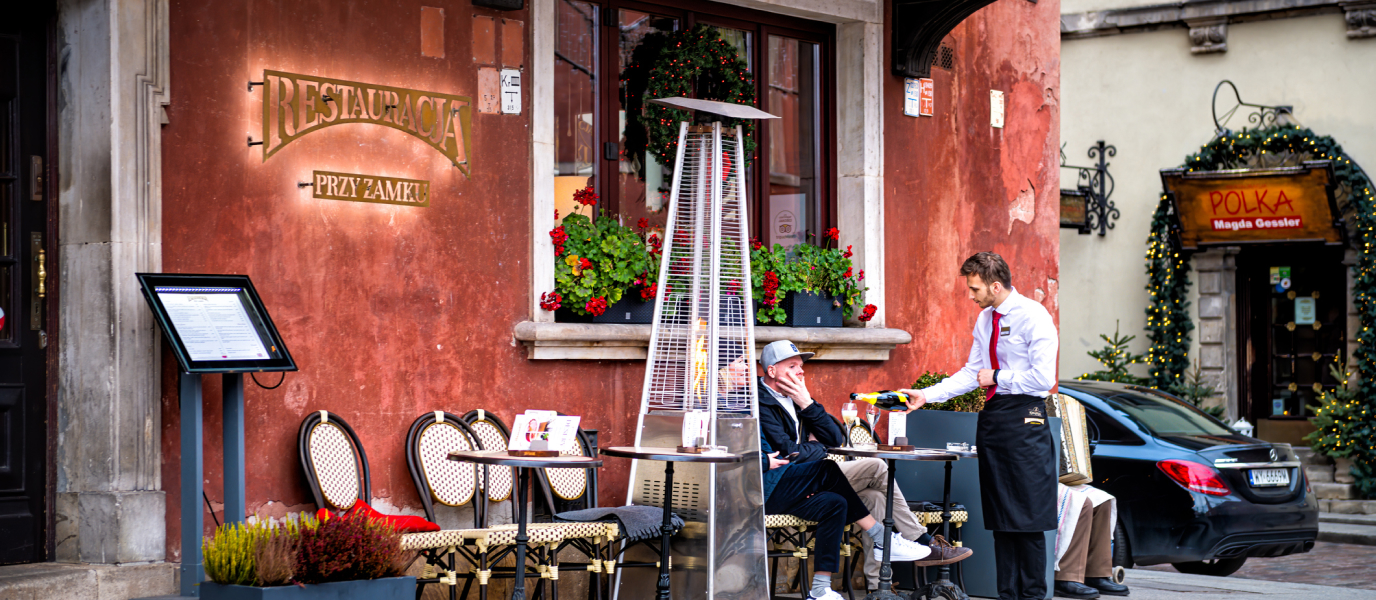Firstly, it’s important to note that typical Polish food is far more varied that you might think. It’s a nation where arable and livestock farming make a huge contribution to the local economy. This means that there is always a wide variety of food in both Polish homes and restaurant store cupboards.
Vegetables such as cabbage, cauliflower, carrot, onion, and potatoes typically feature in every day typical Polish dishes. They are normally served with dairy produce, such as sour cream or cream, pork (cooked in multiple different ways), and even game.
Generally speaking, winter dishes such as soups and stews, are classic foods in Poland. But don’t miss its seasonal salads and cold soups when the warmer weather arrives.
Below are some of the best dishes of typical Polish food with their main ingredients, and details of how to make and serve them.
Pierogi
Pierogi are probably the most famous and popular typical Polish food. They’re a local version of a dumpling, a food type found in the cuisines of many other cultures. Pierogi can be stuffed with lots of different fillings, such as beef, chicken, cheese and even potato, and can be fried, boiled, or baked. They are normally served with sour cream.
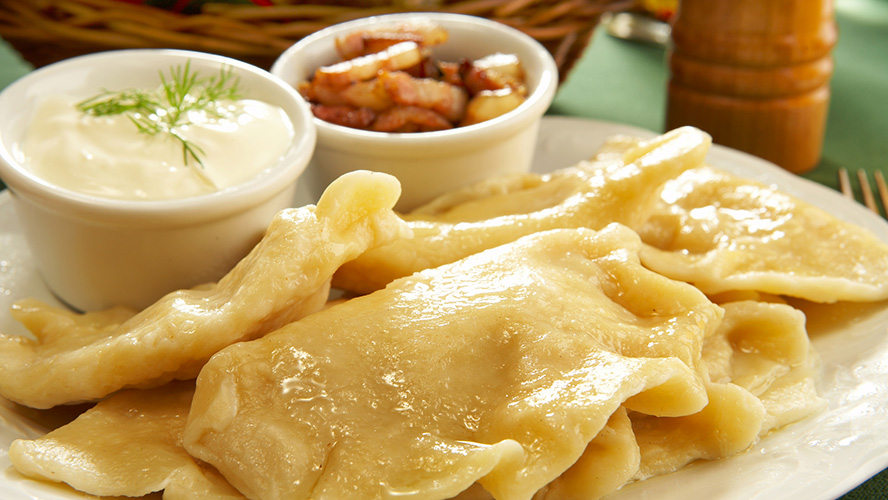
Barszcz
Typical Polish food includes surprising dishes such as borscht: beetroot soup. The beetroot, and borscht (which is served cold), are classic culinary emblems of Poland. A spoonful of sour cream is added to borscht and contrasts with the distinctive red of the beetroot, also reducing its sweetness. Borscht is served with bread and/or sausages.
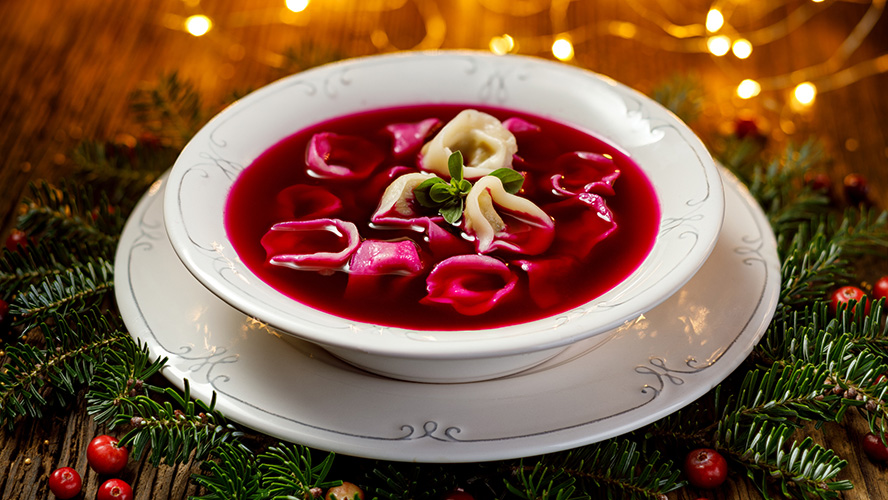
Bigos
Bigos is the perfect dish to enjoy in the cold months of the year and is also one of the most popular dishes of typical Polish cuisine. It’s a local version of sauerkraut, a common dish in Central European countries, and is made with cooked cauliflower or cabbage that is washed before being cooked again to remove the taste of vinegar. Traditional bigos is made with stewed game: deer, venison, boar, etc. and it’s often known as hunter’s stew. Today, it’s commonly made with pork or kielbasas, typical Polish sausages ‒ more about these below!
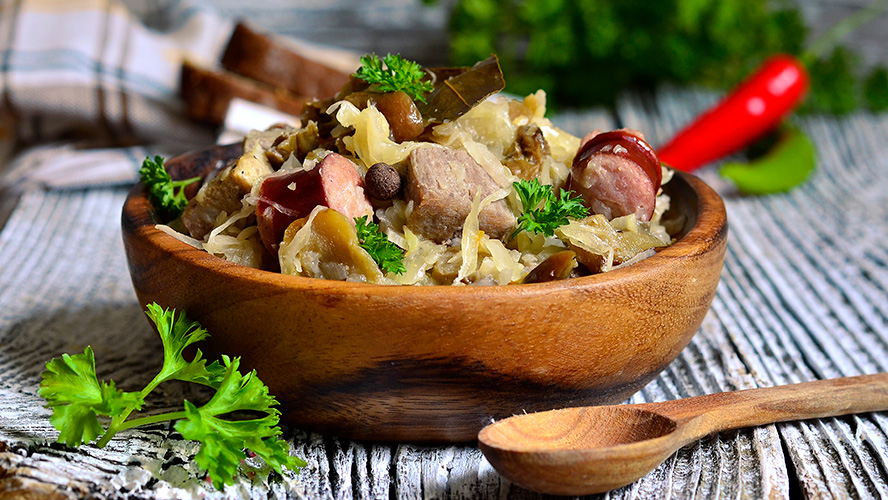
Golonka
Golonka is certainly one of the heartiest dishes of typical Polish food but it’s also one of the tastiest. Golonka is ham hock and, according to the traditional Polish recipe, it should be sprinkled with beer and boiled with vegetables such as cauliflower, onion, carrot, and celery, and seasoned with marjoram, laurel, and pepper.
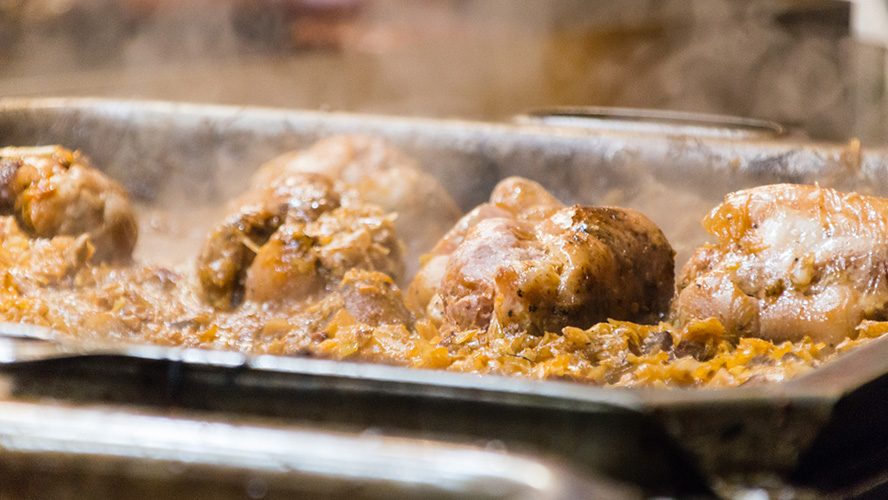
Flaki
Flaki is another typical and hearty Polish dish and there is even a local version from Warsaw. It features offal, such as beef chitterlings cooked gently in tomato sauce with onion and carrot, and seasoned with a variety of aromatic spices. This stew is served with potatoes and/or rye bread.
Golabki
One of the most substantial recipes to feature in Polish cuisine, Golabki are typically found in traditional restaurants and Polish people often prepare them at home. These delicious cabbage rolls are stuffed with rice and minced meat, and covered in tomato sauce that is seasoned with spices.
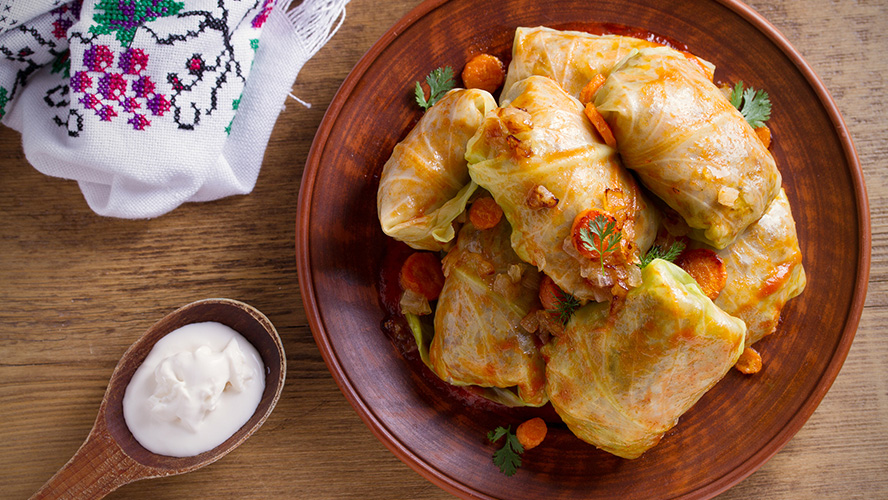
Kotlet schabowy
This is the Polish version of the wiener schnitzel. In Poland, it’s normally served with generous portions of boiled cabbage and chips. It’s often the main course in traditional restaurants.
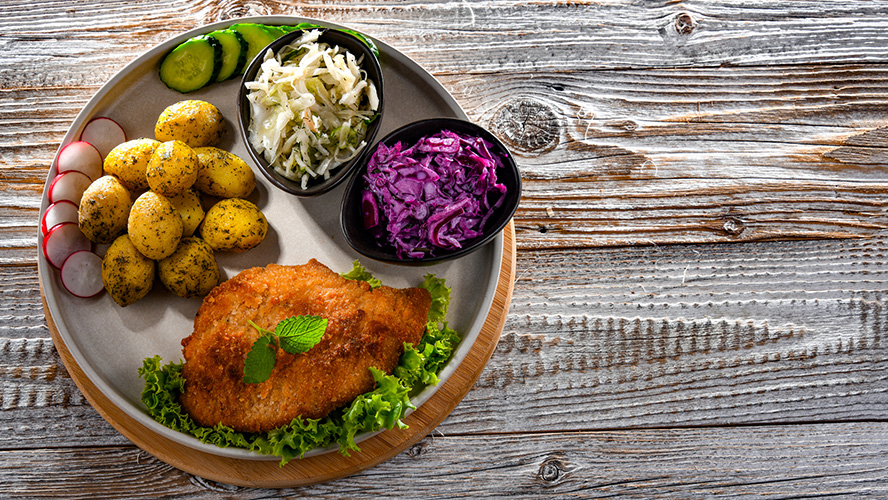
Kielbasas
As we mentioned earlier, kielbasas are Poland’s typical sausages. They come in a wide range of flavours but are almost always smoked and made with minced pork meat and different spices. They can be eaten alone, served with a sauce or added to traditional stews.
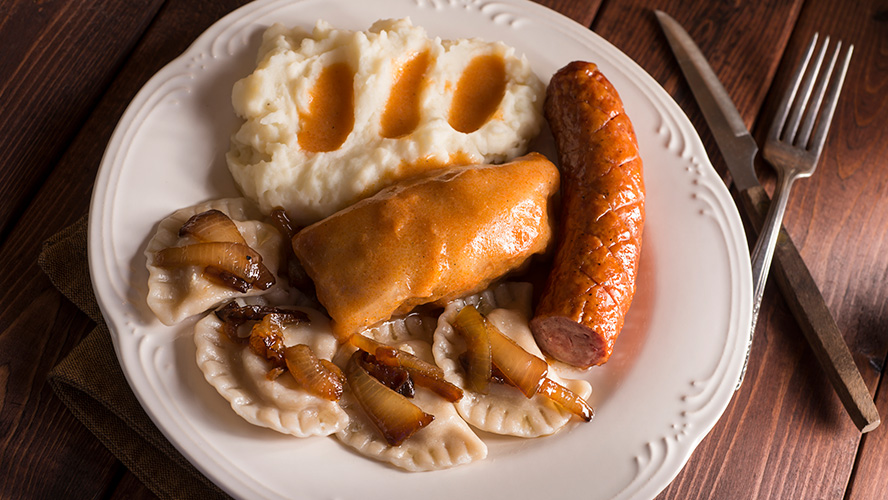
Zurek
Zurek is the name of a type of soup, and also the soured rye flour that is used as the basis for the soup. The flour is cooked with sour cream and then served with sausages and boiled egg. The result? A comforting soup that is perfect for winter and has a surprising combination of savoury and sour flavours.
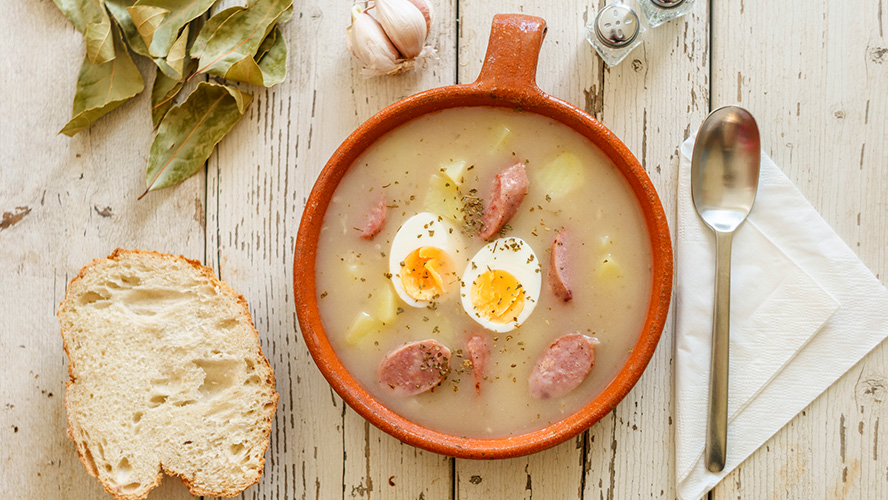
Krokiety
Although the name sounds rather like “croquettes”, and the dish even looks like them, these are rolled up Polish crêpes (nalesniki) that are stuffed and fried. They’re usually filled with kapusta kiszona (Polish sauerkraut), mushrooms, and onion but you can also find them filled with spiced minced meat.
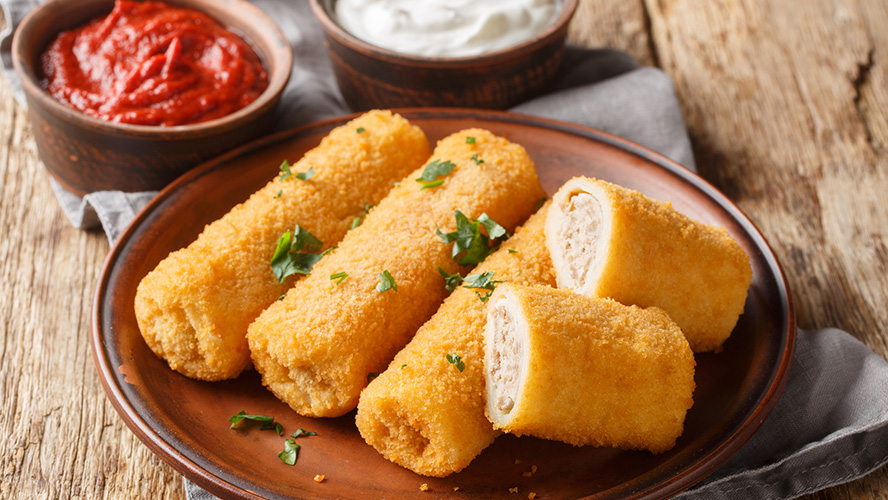
Typical sweet dishes
Nalesniki are one of the classic sweet Polish foods ‒ these are the same crêpes that are used in krokiety mentioned above. When they’re eaten as a sweet dish, they’re stuffed with custard, cream, chocolate, jam, etc. and sprinkled with icing sugar.
W-Z cake or wuzetka is also extremely popular and is a chocolate sponge with a layer of cream, topped with a thin layer of chocolate icing.

Finally, while there are many other typical types of confectionaries in Poland, special mention should be made of Napoleonka: millefeuille pastry and pastry cream.This cake is also called Papieska kremowka in Polish, which means “Cream cake of the Pope”; it was given this new name following a visit by John Paul II to Warsaw, his birthplace, in 1999.
Where to stay in Warsaw
A great accommodation option in Warsaw is the Hotel Barceló Warsaw Powisle. This innovative four-star hotel is housed in a former power station and is in central Powisle neighbourhood, which gives it its name.
It has 151 rooms that, like the rest of the hotel, are decorated in an elegant industrial style, featuring large pipes, machinery parts, and other fascinating details that pay tribute to the building’s earlier function.
The hotel’s main restaurant serves a wide variety of fantastic dishes and guests can enjoy both typical Polish food and international cuisine. Further dining options include the lobby bar, the perfect spot to relax with a beer or cocktail at any time of day, and the rooftop sky bar next to the outdoor swimming pool. The pool opens in the summer months.




























































